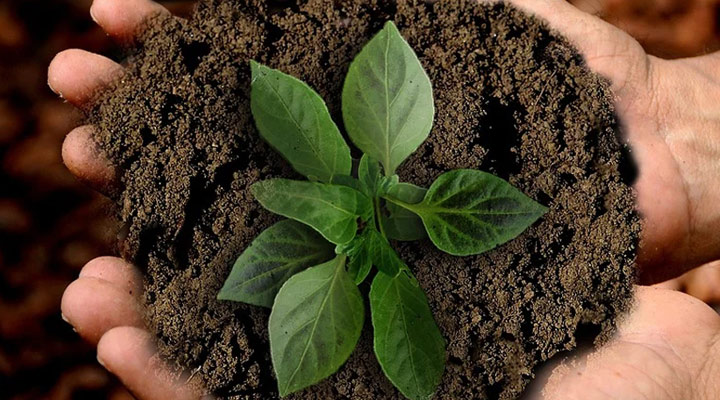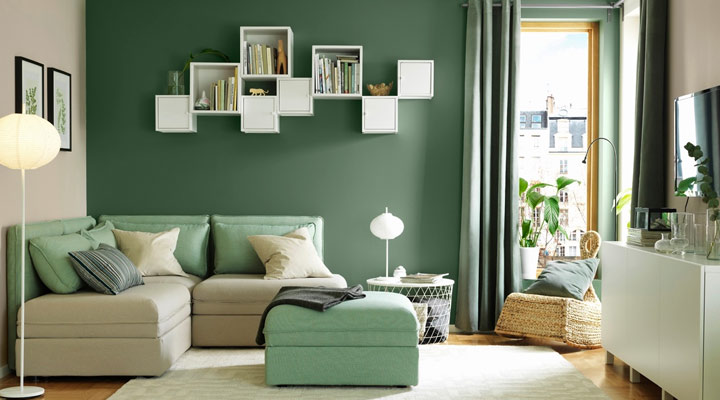Colors directly affect the way of thinking and behavior of humans, and this cannot be denied. Green is the color of nature and induces peace, happiness, and freshness. Stay with us to talk in detail about the psychology of green color and the positive and negative meanings of this color.
Concept and psychology of green color
The green color results from the combination of 2 colors, blue and yellow. Blue instills a sense of security and confidence, and yellow indicates optimism and youth. Naturally, the variety of these two primary colors covers various emotions.
In color psychology, colors with long wavelengths are considered “stimulating or warm,” and colors with shorter wavelengths are considered “calming or cool.” The green color is cold and directly affects human thoughts, relationships, and physical health. This is the reason for using this color in medical centers.
In this table, you can read the positive and negative meanings of the green color:
| Positive connotations of green color | Negative connotations of green color |
| Growth and vitality, renewal and restoration, self-confidence, assurance and security, tact, emotional balance, peace, friendship with nature, compassion, generosity, kindness, loyalty, adaptability, encouragement, social connection | Ownership, materialism, indifference and envy, selfishness, greed, avarice, greed, thoughtlessness, and inexperience. |
Green; The color of peace
Using green colors in centers, offices, restaurants, hotels, and new places will relax customers. Therefore, this color is often used in public places’ interior and exterior design.
Green; The color of nature and health

The green color derives its inherent relaxation from nature. Some researchers relate this peace and positive effect to the process of evolution and say that the green color in the first era meant the presence of water, food, shelter, and harmony in nature. For this reason, products with green packaging are healthier and more natural, even if they are not so and are more harmful.
Green; motivational color
Why do you think green means go and red means stop at traffic lights? Despite being relaxing, green is also a stimulus and motivation for movement. Those who spend the whole day in a green space full of flowers and plants and have access to nature are more inspired and creative. According to research, green light enhances reading power and increases the likelihood of success. Of course, we should not forget that people’s reactions to colors can differ based on past experiences, personal relationships, and society’s culture.
Green; The color of optimism
Colors affect human emotions and strengthen memory. In one of the studies, several inspirational words were written on paper in different colors and given to the participants. Then they were asked to remember the words. Most of them remembered the words written in green on the paper. The researchers concluded that green has more positive emotional connotations and makes remembering and recalling words easier by inducing optimism. In other studies, participants exposed to the color green were more hopeful and less afraid of failure.
Green; The color of jealousy
Did you notice that the patient’s face turned green? Jealousy is a deadly mental illness. For this reason, many people associate the color green with the feeling of jealousy and introduce it as one of the negative signs of the color green.
What does the color green symbolize?
The green color symbolizes growth, hope, and energy balance and expresses environmental concepts such as green initiatives, green energy, green spaces, and peace. Of course, the psychology of green largely depends on the type of green:
- Bright green: spring and rebirth. The color of newly grown plants symbolizes rawness, youth, and inexperience.
- Olive green: calm and peaceful, and elegant. Of course, it is also a symbol of deception and betrayal.
- Dark green: fertility, greed, money, and motivation. The first choice of wealthy, ambitious, and greedy business people.
- Yellowish green: illness, jealousy, decline, fear, and conflict.
- Blue-green color: cleanliness, freshness, and water. This color calms the soul and heals the soul.
- Emerald green: the color of inspiration and vitality and an indicator of abundance and financial and emotional wealth.
- Jade green: the color of trust and secrecy, tact and diplomacy, and generosity of spirit.
- Lime green: symbol of youth and naivety. This color clears the mind of negativity.
- Green grass: a symbol of safety, security, nature, and health.
Psychology of green color in architecture

The green color in architecture is a symbol of luck and blessing. Many people make the entrance of the house green with this idea to open the way for luck to enter the house. Vibrant shades of this color make a great focal point in interior architecture, from floor tiles to kitchen wall coverings and cabinets.
You can also make the toilet and bathroom green and multiply the peace of this environment. If you green the walls, counters, cabinets, and any other part of the house, you have brought peace and prosperity to the guest house with your own hands.
Psychology of green color in clothes
According to psychologists, if the green color dominates your wardrobe, you are self-confident and seek harmony and inner peace. Green clothing radiates a sense of friendship and happiness and is mainly chosen by those who deeply love their lives, are compromisers, and dare defend their interests.
Psychology of green color in spirituality
Green is the fourth chakra, the heart chakra or anahata, which is located right in the center of the chest in the heart area and is a bridge between the lower triangle (root, sacral and solar chakras) and the upper triangle (throat, third eye, and crown chakras). The Anahata chakra includes balance, feelings of kindness, and compassion for oneself and others.
The advantage of using green color
According to research, looking at the green color strengthens the power of imagination and creative thinking of a person to think and make decisions outside of conventional frameworks and solutions. Some light shades of this color are more useful in the home space and increase the concentration of the residents. In areas where you need more energy, try shades of green that are neither pale nor bold, and where you want to make the space appear larger, go for lighter shades if you are looking for the right color for a bright room, a cold color like green moderates the heat of the space.
Applications of green color
The many uses of green in daily life indicate that production and advertising companies are well aware of the psychology of green color and try to convey a good image of their performance to the audience by using this color in the product packaging or providing services. Most sustainable products have green packaging, military equipment for soldiers is green, and environmental concepts such as green energy, green initiative, and green peace borrow from this concept. Different shades of green are a good choice for the walls of a painting studio, a corner of a writer’s study, or painting a home office.
last word
Colors stimulate human psychological reactions and affect emotions. As one of the most used colors in the world, green is a symbol of nature for many people and evokes the freshness and tranquility of green space. Of course, we should not forget that our reaction to any color is strongly influenced by our past experiences and the culture of the society in which we live. The same color may be associated with two completely different things for two people.
How much green color do you use? What does this color mean to you? We are waiting to hear your comments.
Warning! This article is only for educational purposes; to use it, it is necessary to consult a doctor or specialist.



